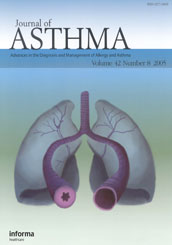Bronchial thermoplasty is a non-drug procedure for severe persistent asthma in patients 18 years and older whose asthma is not well controlled with inhaled corticosteroids and long-acting beta-agonists.
BT was described as “the first nondrug asthma treatment,” a statement that overlooks important measures such as avoidance and education. Nevertheless, it is very helpful that a new invasive procedure has been subjected to a prospective, randomized, sham-controlled study, permitting healthcare practitioners to be relatively confident that the benefits are real.

You can read more about this procedure from
This is a preview of BRONCHIAL THERMOPLASTY-NEW SURGERY TO TREAT ASTHMA.
Read the full post (107 words, 3 images, estimated 26 secs reading time)
Information is Stored in the Code Letters of DNA
- All hereditary information is stored in genes, which are parts of giant DNA molecules
- Genes code for the amino acids of proteins
- DNA is the archival copy of the code- kept in nucleus where it is protected & repaired
- DNA is organized with special proteins into chromosomes
- For protein synthesis a working copy of the code is made from RNA
- Overall scheme: DNA -> RNA -> protein
- Another version: “One gene, one enzyme”
The Code is Based Upon the Structure of DNA
Reasons for Cell Division
- Cell division is required for:
- a) growth
- b) repair & replacement of damaged parts
- c) reproduction of the species
In Cell Division Copies of the DNA Must Be Sent to Both New Cells
- Since the instructions for making cell parts are encoded in the DNA, each new cell must get a complete set of the DNA molecules
- This requires that the DNA be copied (replicated, duplicated) before cell division
Genetic Blueprints for Cells Are Organized Into Chromosomes
- The plans for making cells are coded in DNA
All Living Organisms are Made Up of Units Called Cells
- Cell theory:
- All living creatures are made from 1 or more cells
- All cells are produced from previously existing cells (no spontaneous generation)
- All cells appear to be descended from the first cell which existed about 4 billion years ago
- For a species to exist its reproductive cells must be potentially immortal (no aging)
- Our bodies start from a single cell and contain about 100,000,000,000,000 (10^13) cells at maturity
There Are 2 Basic Types of Cells: Prokaryotic and Eukaryotic





